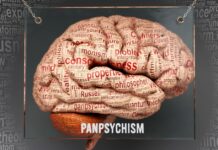We are all weary of the story that cancer is “in your genes”. Luckless (or silly) Angelina Jolie had her breasts “amputated” because she had the dangerous genes BRCA1 and BRCA2. As I correctly predicted, she later developed signs of another cancer in her ovaries and had her ovaries and fallopian tubes removed.
The reason I was so sure is that cancer is NOT a genetic disease. To remove breast tissue was merely to drive the disease process deeper inside and that will force it to come out in some other guise.
Cancer is actually a disease of metabolism, as discovered by Otto Warburg, who was awarded the Nobel Prize in Physiology or Medicine in 1931 (less well-known is that Warburg was nominated for the award 47 times over the course of his illustrious career!)
He showed decisively that cancer thrives in a low-oxygen environment. Cancer cells turn to an alternative metabolic pathway (energy-creating route) called “glycolysis”. It’s not very efficient and yields only 2 molecules of ATP, compared to the normal full-oxygen route, which creates 36 molecules. This healthier route is called aerobic metabolism.
I repeat, it’s not about genes. There are frequent DNA mutations found in most cancers BUT THEY ARE ALL DIFFERENT! There is no one gene mutation that stands for all cancers. Indeed, some cancers have no DNA mutation at all!
And known cancer-promoting genes, like BRCA1 and BRCA2, mean nothing without the epigenetic enabling. Genes just ARE; they have no effect unless they are switched to “ON”. It’s the switching on that is the problem, not the presence of a gene.
We call this switch on effect “epigenetics”, which means over and above the genes themselves. Low tissue oxygen is just one possible epigenetic trigger. The presence of sugar is another. Glycolysis of cancer cells needs sugar (blood glucose) to make the pathway work.
It was a brilliant and PROVEN hypothesis.²
But then, in 1953, James Watson and Francis Crick pieced together the structure of the DNA molecule and set the stage for the triumph of molecular biology’s gene-centered approach to cancer. In the following decades, scientists came to regard cancer as a disease governed by mutated genes, which drive cells into a state of relentless division and proliferation. The metabolic catalysts that Warburg spent his career analyzing began to be referred to as “housekeeping enzymes” — necessary to keep a cell going but largely irrelevant to the deeper story of cancer.
“It was a stampede,” says Thomas Seyfried, a biologist at Boston College, speaking of the move to molecular biology. “Warburg was dropped like a hot potato.”
But Warburg will have the last word against the dinosaurs. His discovery, later named the Warburg effect, is estimated to occur in up to 80 percent of cancers. It is so fundamental to most cancers that a positron emission tomography (PET) scan, which has emerged as an important tool in the staging and diagnosis of cancer, works by showing up the places in the body where cells are consuming extra glucose. In many cases, the more glucose a tumor consumes, the worse a patient’s prognosis.¹
Which gets me to thinking about mitochondria. Healthy mitochondria are the standard for aerobic metabolism, as opposed to dangerous, pro-cancerous glycolysis.
These little “energy bunnies” in our cells were known to Warburg, but not the full understanding of how important they are. Indeed, Warburg was so monumentally stubborn and arrogant that he refused to use the word “mitochondria,” even after it had been widely accepted as the name for the tiny structures that power our cells. Instead Warburg persisted in calling them “grana,” the term he came up with when he identified those structures as the site of cellular respiration.¹
Look After Your Mitochondria!
I have a brilliant mitochondria energizer food (Mito-Cell Rejuvenator) but I would not be allowed to say it can cure or prevent cancer! Indeed, I couldn’t prove that. But I can use the allowed cant of the day: “Supports healthy mitochondrial function”.
It has coenzyme Q10, which mitochondria gobble up for food. Plus a heart-healthy sugar: D-ribose. That too selectively feeds mitochondria (which is why it is good for the heart!)
I also added DMG, dimethyl glycine (DMG), a superb energy booster, and Rhodiola, a so-called adaptogen (enables stress tolerance).
I’m currently on a move to add PQQ (polyquinoline quinone), which actually stimulates the growth of new mitochondria. We lose them gradually, as we age, so growing plenty more makes a lot of sense.
Epilogue
Near the end of his life, Warburg grew obsessed with his diet. He believed that most cancer was preventable and thought that chemicals added to food and used in agriculture could cause tumors by interfering with respiration. He stopped eating bread unless it was baked in his own home. He would drink milk only if it came from a special herd of cows, and used a centrifuge at his lab to make his cream and butter.
The current Warburg revival has allowed researchers to develop a hypothesis for how diets linked to our obesity and diabetes epidemics may also be driving cells to the Warburg effect and cancer— specifically, sugar-heavy diets that can result in permanently elevated levels of the hormone insulin.
The insulin-cancer hypothesis can be traced to the research of Lewis Cantley, the director of the Meyer Cancer Center at Weill Cornell Medical College. In the 1980s, Cantley discovered how insulin is switching cells onto the Warburg-cancer route. One way to think about the Warburg effect, says Cantley, is as the insulin signaling pathway “gone awry — it’s cells behaving as though insulin were telling it (sic) to take up glucose all the time and to grow.”
Cantley is currently studying the effects of diet on mice that have the mutations that are commonly found in colorectal and other cancers. He says that the effects of a sugary diet on colorectal, breast and other cancer models “looks very impressive” and “rather scary.”
James Watson, 88, remarked that locating the genes that cause cancer has been “remarkably unhelpful” — the belief that sequencing your DNA is going to extend your life “a cruel illusion,” he says.
But there is a lot of money in it, however! And more money still from its justification of similar interventional surgery and other actions (as with Jolie). Oncologists make MOUNTAINS of money out of the now-defunct DNA mutation hypothesis. So it isn’t going to go away any time soon!
If you want to beat cancer, look after your mito-cell energy bunnies!
Give them a good feed. Go here.
To your good health,Prof. Keith Scott-Mumby
The Official Alternative Doctor
References:
- https://www.nytimes.com/2016/05/15/magazine/warburg-effect-an-old-idea-revived-starve-cancer-to-death.html
- https://www.ncbi.nlm.nih.gov/pmc/articles/PMC3506713/





